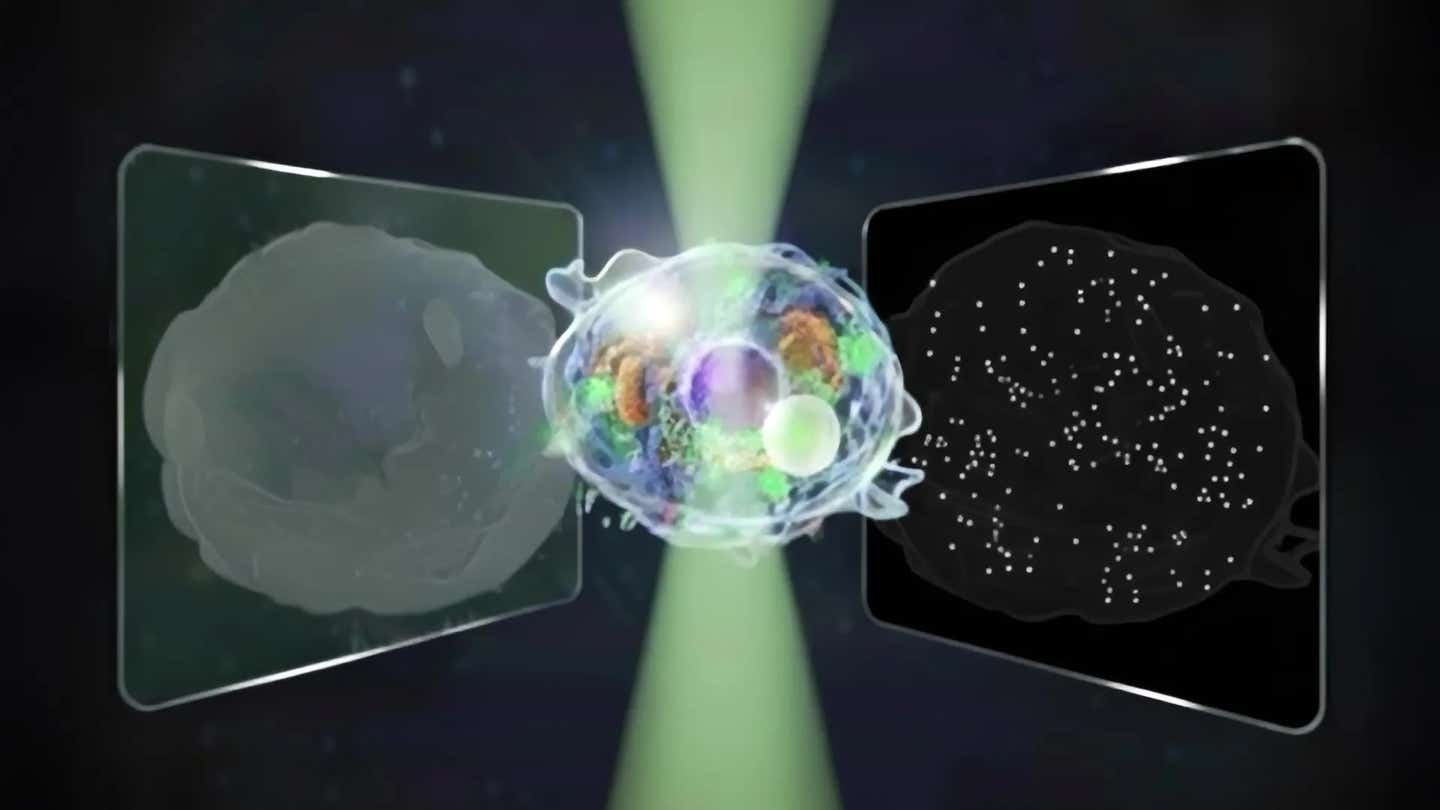AI breakthrough detects brain tumors the size of a pinhead with 97% accuracy
New AI detects tiny brain metastases doctors often miss, offering earlier diagnosis and faster treatment for cancer patients.

A new AI tool can spot tiny brain tumors that even skilled radiologists sometimes miss. (CREDIT: CC BY-SA 4.0)
Tiny brain tumors often hide in plain sight—sometimes no bigger than a grain of rice. These metastases, or secondary cancers that spread from other parts of the body, are especially dangerous. They tend to grow quickly, are hard to treat, and can go unnoticed until it's too late. Even experienced radiologists, overwhelmed by the volume and complexity of brain scans, sometimes miss them. But now, a new tool powered by artificial intelligence is changing the game.
In a major breakthrough, researchers at Robovision Healthcare and the Netherlands Cancer Institute (NKI) have developed BrainMets AI, an advanced tool that helps detect brain metastases with near-perfect accuracy.
The silent threat of brain metastases
Brain metastases are the most common tumors in the central nervous system. They affect nearly one in six adult cancer patients. These small lesions often go undetected in their early stages because of their size and the sheer volume of imaging data radiologists must review. A single brain MRI can generate hundreds of image slices per patient. When doctors must read dozens of these each day, even skilled professionals can miss small or subtle signs.
Early detection matters. The sooner these tiny tumors are found, the better the chances for survival, fewer complications, and a wider range of treatment options. That’s where BrainMets AI comes in.
An algorithm trained with care
The success of BrainMets AI lies in how it was trained. Robovision’s team used more than 1,500 MRI scans collected from multiple institutions across Europe and the U.S. Each scan was carefully reviewed and labeled by neuroradiology experts using high-resolution, voxel-level annotations. These data points are like 3D pixels, allowing the AI to learn what real brain metastases look like—down to the tiniest detail.
Unlike many AI models, which rely on publicly available datasets or generic training, this system was tailored from the ground up. The architecture was custom-built by Robovision engineers to meet the unique challenges of brain imaging. According to the team, this handcrafted approach is what gives BrainMets AI its edge.
Related Stories
“Like any recipe, the quality of AI comes from the quality of the ingredients and the skill of the chef,” said a spokesperson from Robovision. “With curated data, accurate annotations, and an optimized neural network, we created an algorithm that sets a new standard in neuroradiology.”
Accuracy that pushes boundaries
In testing, BrainMets AI showed a lesion-level sensitivity of 97.4%. That means it correctly identified nearly all metastases across the test scans. Even more impressive, it detected 93.3% of lesions smaller than 3 millimeters—lesions that are often the most difficult to see.
The AI was validated on a set of 260 patients, totaling 311 MRI scans. It flagged every single case of brain metastases correctly, without a single false negative. Only about 2% of its findings were false positives.
“This tool is a true leap forward,” said Dr. Laurens Topff, a neuroradiologist at the Netherlands Cancer Institute and the project’s clinical lead. “It increases our confidence in detecting even the smallest lesions, supporting more timely and accurate treatment decisions.”
Transforming the radiologist’s role
BrainMets AI isn’t just a detection tool. It’s also designed to lighten the load for radiologists. Once a lesion is spotted, the software creates clear, structured reports. These reports show tumor sizes, volumes, and changes over time. They include snapshots, charts, and 3D visuals that make it easier to track a patient’s response to therapy.
This automation helps radiologists work faster and reduces the risk of burnout from repetitive tasks. More importantly, it supports communication across treatment teams by giving oncologists, surgeons, and other specialists a clearer picture of what’s happening in the brain.
“We were genuinely impressed by the precision and consistency of BrainMets AI,” said Dr. Michael Iv, Clinical Professor of Neuroradiology at Stanford Medicine. “It has significant potential to help radiologists detect, quantify, and monitor brain metastases with greater confidence—especially in the most challenging or time-pressured cases.”
Looking ahead to real-world use
BrainMets AI is currently undergoing clinical validation trials in Europe. Testing is also underway in the United States. If all goes well, it could become available for use in hospitals and clinics by 2026. Robovision is working toward both CE certification in Europe and FDA clearance in the U.S.
When approved, the AI will be used as a concurrent reading aid, meaning it won’t replace radiologists but will work alongside them. It will help doctors detect and track metastases, offering measurements and trend analysis over time.
Dr. Topff sees this as a major benefit. “With automated lesion tracking and volume measurement, we can monitor therapy response more consistently,” he said. “That’s something we’ve needed for a long time.”
The future of AI in medicine
The publication of this study in Radiology marks more than just a technological advance. It shows how AI can support—not replace—human expertise. It also reflects a growing shift in medicine toward smarter, faster, and more personalized care.
Tools like BrainMets AI won’t eliminate the need for skilled radiologists. But they can help ensure that nothing gets missed, especially when time and accuracy are critical. For patients with cancer, that could make all the difference.
As cancer care becomes more complex, innovations like this show that AI, when developed carefully and tested rigorously, can play a powerful role in saving lives.
Note: The article above provided above by The Brighter Side of News.
Like these kind of feel good stories? Get The Brighter Side of News' newsletter.



